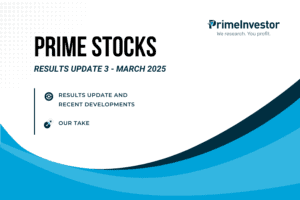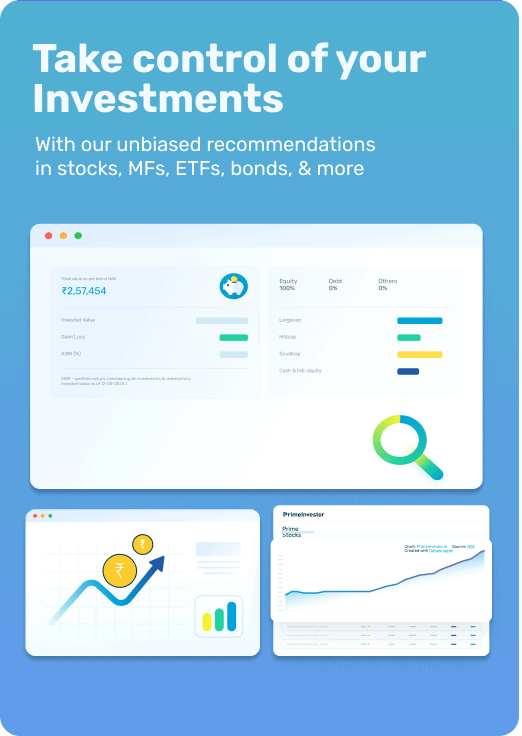
If the recent events in the debt market brought to light the liquidity risk arising from lower rated papers, you probably haven’t seen the unfolding of various kinds of risk since September 2018.
In 2013, when duration became a risk on the back of rate hikes, money flowed copiously to credit risk over the next 5 years. Now, the cycle has turned. Money is moving to duration from credit risk.
But the lessons learnt may soon be forgotten when the tide turns and the next shift begins – back to credit risk at some point. Hence, here are some lessons both from credit risk and duration that you might want to save for future, whichever way you move.
Returns mask risks
As recently as 2 years ago, debt funds were picked like equity. You would go for the top-returning one and the category or time frame didn’t matter. Some discerning investors used more metrics, like volatility and whether the fund had instances of negative returns etc. Unfortunately, none of those showed any reg flags. Look at the graph below of Franklin India Ultra Short Bond fund.
Here was a fund that delivered a steady 1.2 percentage points above category on an average and at its peak gave as much as 3 percentage points than peers. And like an equity stock peaking before a correction, it fell steeply from glory. No long-term investor who has steadily seen returns in this fund would have anticipated this.
What you should remember: Returns mask risks. Accrual funds with high yields (essentially credit risk funds, whether they belong to that category or not) can be exceedingly steady in delivering returns. As an accrual product, they show little to no volatility as many of them would hardly be traded in the market. The coupon steadily adds to the NAV, like it would with a liquid fund!
So, what can you do to pierce this return veil? You should doubt funds when they consistently deliver far higher returns than their category average in debt. The debt market by and large goes behind the same investment universe and hence return differential can’t be high unless there is significant variation in maturity or credit.
Hence, you should doubt when you see high returns in categories where the returns are inherently not high or have low duration. Once you ask yourself where the return is coming from, the question will lead you to check a fund’s portfolio composition and your answers will lie there.
Yield not equal to return
Did you know there was a point when many relationship managers in banks sold credit risk funds and other funds with credit risk, as a substitute for FDs? Their simple selling tool: the high yield in debt funds! Subtract the expense ratio from the yield and boom – you get returns far higher than FD! All these high credit products were so steady that they really did not behave too differently from FDs, in the way that they firmly built accrual.
But once again, if investors had questioned such high yields, they would likely have known returns cannot come without risks.
In the graph below, Aditya Birla Sun Life Medium Term had a yield just a tad higher than the category to begin with, but then took off on a meteoric rise later.
This is different from Franklin India Income Opportunities, which had had steadily higher yields than its category. What happened with the ABSL Medium Term fund? Yield spike – caused by both downgrades and also put options that could not be exercised.
The complexity in calculation of yields means that yield to maturity is not simply the residual interest from the papers. So when your fund’s yield spokes, it could well be that the chances of getting back the money invested is actually going down.
As for the Franklin fund, it was taking higher risks throughout – with the yield peaking in recent times. The Birla fund on the other hand, started flashing red post September 2018 with its abnormally high yields. What applied to our previous example applies here – doubt steadily high returns and check where it came from.
What you should remember: Yield does not simply translate into returns. Where such high yield comes from (the portfolio) is more important.
Hits may not be over in the debt market
You are likely familiar with some advisors telling you that there is no point trying to act after you take a hit in a fund and that you should wait. But some funds have shown that mark downs keep happening and yes, in the same paper! So, the worst may not be over at all!
Did you know that there was a mark down of the Jharkhand road asset by Aditya Birla AMC in some of its schemes right after the Franklin fallout?
Did you read about the mark down of various low-rated papers by BOI in end April?
Did you see a notice from Principal AMC on its DHFL paper being marked down post the Franklin fallout?
And remember, we are not talking of fresh markdowns. The same old skeletons keep re-appearing!
Why did this happen? AMCs adopted different ways to mark down and some voluntarily wrote off more. Some quietly took it in instalments to reduce the pain. This simply tells you that you cannot forgive a hit in your NAV and move on.
Exit if you know what’s happening, even if it means losses. Exit even if you don’t know what will transpire in future but you know are with an inherently risky fund, going by its portfolio.
And of course, there can be a series of hits in a fund, one after the other – IL&FS, DHFL, Essel, and the continuing issues with them, followed by fresh hits in Vodafone and Yes Bank. A fund may take 3-5 years to even overcome such shocks to NAV.
What you should remember: Where a portfolio carries credit risk, one hit does not clean the portfolio. There may be more risks ahead!
Concentration is an aftermath
For many of the cases mentioned earlier, the pain was much more than the original allocation that the funds had to those bad papers. In other words, the funds did not start off with high exposure to risky papers. The exposure became high solely on account of concentration of papers following redemption pressures.
Redemption leads to a fund holding higher percentage to existing papers as its AUM base reduces. And ironically, only the illiquid and lower quality papers’ exposure swells as the liquid ones are sold to meet redemptions. A classic example, from 2018, was PGIM Ultra Short Term (then called DHFL Pramerica Ultra Short Term). With a not-too-low holding in DHFL to begin with, it came under severe redemption pressure once the DHFL saga broke out. While it tried to solve the DHFL problem, its exposure to other papers swelled. The data below shows you how the fund’s holding in the ADAG group moved – ADAG later went into insolvency.
A 3.4% holding in the ADAG paper swelled to 100% as the fund sold its other liquid papers. To meet redemption, post the DHFL confidence crisis. When the ADAG group defaulted, this fund had to take a 100% hit!
What you should remember: Redemptions per se may be manageable but the aftermath of the redemption may leave a scheme with a portfolio that may no longer fit your risk profile or time frame.
Average maturity may be deceptive
In the recent fallout of 6 of Franklin India’s debt schemes, Franklin India Ultra Short Bond had an average maturity of 0.6 years as of March 2020. It was therefore thought that the fund would return money roughly around the same time. However, complexity in calculation of the portfolio duration, use of put and call options and how they are factored etc. meant that the actual maturity of a large number of papers were actually well past the portfolio’s average maturity date.
What you should remember: It is not possible for a lay investor to know the complexities of calculating a fund’s duration. When you align your own time frame to that of the fund, it is not enough to go by the maturity. You will probably have to check the maturity of the papers (non-gilt, non-AAA) with the longest maturity in the said portfolio. That would be your maximum time frame in the event of a risk.
Gilt is credit-proof, not volatility-proof
This is an important point at this juncture simply because the flight to safety has begun and that mean inflows into gilt. Besides, the search for returns will bring to focus the double digit returns in this category now. Long-term gilts can be great long-term options. But we are increasingly hearing from some of you about looking at it as a short-term option.
Yes, in the current interest environment, while a further cut in rates can lead gilts to rally, the risks are high if the converse happens. The data below will tell you that every time you invest when the returns are in double digits, you may end up with lower returns in the next on year as you are likely catching the gilt fund when yields are at a bottom.
For example, your average returns in gilt for one-year ending February 2015 was 19.4%. Had you invested around that time or even a bit earlier your returns would have been 2-4% for the next one year. This risk is something you should be cognisant of. Would you be able to time your entry and exit in gilt, if you are investing for 1-2 years? If not, they should only be your long-term holding.
While we have heard many investors tell us they are fine with any volatility in gilt than take credit risk, in reality they are not ok with it.
For example, even as recent as 2018, over June to September, gilt funds were sporting negative 1-year returns. Over a 10-year period, the worst 1-year returns on an average was -2.5% and was as bad as 6.5% in some funds.
What you should remember: When you say you can take volatility; you should know it means taking losses too. Most of you don’t expect a government security fund to fall and hence hurriedly switch – and where? To funds that seem to deliver rock steady in their accruals – until the default happens 😊
Just as we emphasize that fund managers should stick to their mandate, it is important for you to stick to your own portfolio mandate. Deviations, to ride market fancies, can sometimes hurt.
Note: Check out our Prime Funds for sensible debt fund options to consider. Of course, you can see our Prime Deposits for fixed income choices.






11 thoughts on “Debt lessons that you may not have learnt yet”
Fantastic article.
Would it be possible for primeinvestor to put together these articles about debt funds as an e-book and publish? I think that Would serve as a very useful reckoner to refresh the learnings and not make the same mistakes, as market changes.
Thnx
If one is willing to stay invested in GILT funds for very long period of 7-10 years without being worried about short term volatality, it’s a good choice right?
Hello Sir, Yes it is fine. But in 3 yeears, if there is a downcycle and your fund sports low single digit returns, you should still remember it is for a longer periods 🙂 thanks, Vidya
Hi,
Do you think Gilt MF can have liquidity risk? Here is a hypothetical example. It seems due to current high return in GILT fund, and potential credit risk in other debt MF, many people may invest in Gilt fund now. Many times this is happening due to others’ “advise” and not all of these investors understand the interest rate risk/volatility in Gilt fund. Now at present interest rate is low. There is a high probability that in a year or two, interest rate will increase. That time Gilt MF may take a hit (specifically constant maturity one) . That time many investors who invested in Gilt MF earlier without understanding this nature of volatility of GILT MF, will be panicked, and try to sell those MF in a hurry. This will create “Redemption” pressure on Gilt fund. Can it trigger a liquidity risk and a situation recently observed in six Franklin debt funds? E.g. AMC may not find buyers in market if buyers have already invested significantly in those Bonds. Is this possible? If yes, then it is problem even for investors who invested on Gilt fund for long term after understanding the interest rate risk. And does it mean we should monitor a sudden increase of AUM on Gilt Fund during “low interest rate period”, which may cause a future “redemption pressure”?
– Thanks,
Hello Sir, Not the case. Gilts are largely held by institutional investors and in recent years in foreign institutional investors. They have been large sellers year to date in 2020. And it hasn’t created any liquidity pressure. As tradable sovereign instruments, there are sufficient buyers and sellers. thanks, Vidya
Dear Vidya,
A nice analysis indeed. I heard of a Z-score method to arrive at ratings of a company and how the deteriorating financial stability of a company gets gradually reflected in a falling score, unlike the ratings followed by Crisil or CARE (whose ratings suddenly can potentially fall from AAA to A- overnight) which aren’t perhaps trustworthy in today’s economic situation (Having a limited knowledge, I may be wrong too in saying so). The Z-score apparently seems to give early warnings….. is it something that funds should consider, like Riskometer in fact sheets? Thank you.
Hello Sir,
Thanks.
Yes, t is true that Z score is very amenable to draw on a normal distribution curve and is used in various rating tools, inlcuding ours. However, its effectiveness can be only as much as the input it receives, the weights of those inputs or how dynamic such inputs are. So that essentially leaves it to activelyt racking each of these companies, their cash flow strength and repayment strength and quickly giving them as inputs for the score tho throw red flags. Of course, I cannot comment on the particular user case until I udnerstand the methodology.
thanks
Vidya
Very few ‘experts’ were insulated from the credit mess. Many drank the kool aid dished out by the AMCs. A sense of paranoia is critical in debt.
On a different note, would your MF analysis tools also please provide 3 yr/ 5 yr… rolling returns for each of the MF schemes. This will help moderate expectations, especially in equity schemes.
Hello sir, point noted. thanks, Vidya
Dear Vidya
Good analysis. The key aspect is mentioned in your last para. The Fund Manager has to manage the mandate. We have duration funds (e.g., Aditya Birla Sun Life (ABSL) Dynamic Bond) taking credit risk (Jharkhand Road), and short duration funds (e.g.,Franklin Ultra short) investing in long maturity investments using loopholes. Unless the Fund Managers are made personally responsible, this won’t improve. One cannot expect the investor to know and act on all this un till something goes wrong. PrimeInvestor should highlight such deviations in the mandate periodically and shame them in public. The statutory bodies can only do so much.
Finally, funds like ABSL has a habit of creating a segregated portfolio for its failed investments (e.g., ABSL Dynamic Bond, ABSL Credit Risk Fund) and then showing a good % return on the main fund portfolio. This is like saying we have earned a return of 9% p.a. for last 3 years, if you leave out our bad investments!! How can one stop this misleading returns indicator?
Hello Sir,
Thanks. Your frustration is understandable.
On segregation, etc. hard to just blame the AMCs when regulation introduced this. In the name of investor protection by regulator, some sub-optimal decisions do happen.
I agree investor can definitely not be expected to understand or act. But their risks can be reduced if their own return chasing reduces. I know of many good advisors who dissuade their clients from taking risks but are seldom heard. While there is no denying the issues with AMCs, I do believe investors need to introspect too.
thanks, Vidya
Comments are closed.